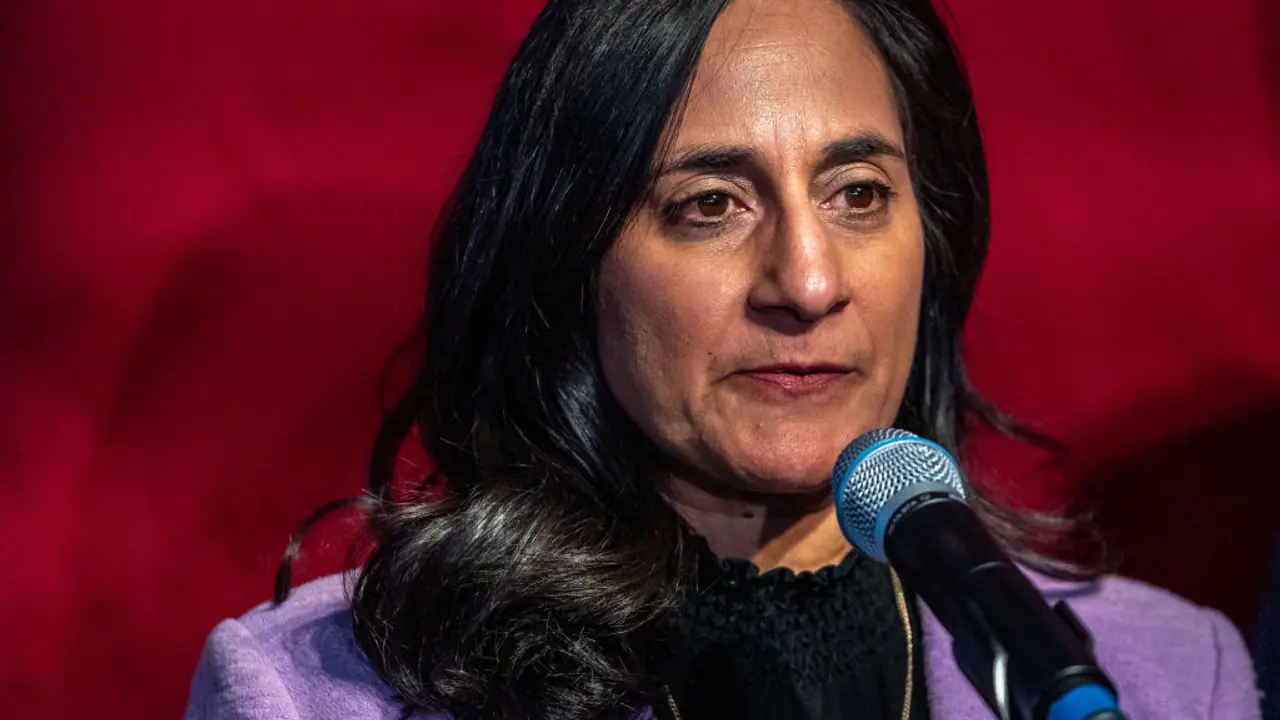Anita Anand becomes Canada's first Hindu woman Foreign Minister amid strained India-Canada ties, raising hopes and challenges in resolving the Khalistan issue.
In a sweeping cabinet overhaul, Canadian Prime Minister Mark Carney on Tuesday unveiled his newly-formed government, naming Indian-origin Anita Anand as Canada’s new Minister of Foreign Affairs. The announcement has sparked considerable attention globally, particularly in light of the current diplomatic chill between Canada and India.

The reshuffle, which included 38 members—28 ministers and 10 Secretaries of State—signals Carney’s intention to reset Canada's foreign and economic priorities. A key theme in Carney's new administration is redefining Canada's relationship with the United States and strengthening its global presence, and Anand will now be central to those efforts.
Anita Anand: A Historic First for Canada
Anita Anand, a Member of Parliament from Oakville, Ontario, has made history as the first Hindu woman to be appointed as Canada’s Foreign Minister. Her swearing-in carried powerful symbolism, as she took her oath with her hand placed on the Bhagavad Gita, a sacred Hindu scripture.
“I am honoured to be named Canada’s Minister of Foreign Affairs. I look forward to working with Prime Minister Mark Carney and our team to build a safer, fairer world and deliver for Canadians,” Anand said following the announcement.
Anand’s appointment was met with celebration from Hindu organisations across Canada, including the Vishwa Hindu Parishad (VHP) Canada and the Canada Hindu Advocacy Coalition, which called her an inspiration for the country’s Hindu community.
Indian Exteranal Affairs Minister Dr S Jaishankar too posted a message on X in the wake of her appointment as new foreign minister. “Congratulate @AnitaAnandMP on your appointment as Canada’s Minister of Foreign Affairs,” he wrote.
Notably, Anand had earlier indicated she would leave politics and return to academia. However, Carney reportedly persuaded her to rejoin the Cabinet after her re-election in last month’s vote. Her prior ministerial roles include serving as Minister of Defence, Minister of Transport, and Minister of Public Services and Procurement, where she directed Canada’s pandemic-era vaccine acquisition strategy.
In her new role, Anand is expected to be at the forefront of reshaping Canada’s foreign policy in the face of international turbulence and domestic scrutiny.
The Khalistan Conundrum: Can Anand Bridge the Divide?
One of the most delicate challenges Anand faces is the severely strained relationship with India. Ties between the two countries soured following the June 2023 killing of Khalistani separatist Hardeep Singh Nijjar in British Columbia. The incident led to a diplomatic standoff after former Prime Minister Justin Trudeau alleged Indian involvement, which New Delhi vehemently denied.
Anand’s appointment is being closely watched in this context.
In July 2023, as pro-Khalistan elements staged protests targeting Indian diplomats, Anita retweeted a statement by then-Foreign Affairs Minister Melanie Joly condemning the demonstrations.
“The materials posted online for a protest on July 8 are unacceptable, and they do not represent Canadians. Canada will continue to ensure the safety of foreign diplomats in this country – and we take this responsibility seriously,” she had said.
Despite her Hindu background and support from Hindu organisations, Sikh groups have largely refrained from commenting on her new role—a silence that observers believe signals the sensitive nature of her portfolio in this context.
Indo-Canada Relations: A Tightrope Walk Ahead
Canada is home to a significant Sikh population—771,790 according to the 2021 census—and the Khalistan issue remains a politically charged topic. Anand must now navigate this intricate terrain while preserving the integrity of Canada’s multicultural democracy.
Observers say her prior role in shaping Canada’s Indo-Pacific Strategy, with a focus on regional security, could be an asset. There is cautious optimism that her leadership might rekindle trade dialogue, foster defence cooperation, and potentially ease immigration pathways between India and Canada.
However, success is far from guaranteed.
A Cabinet for Change: Carney’s Vision
Prime Minister Carney, who replaced Justin Trudeau earlier this year and secured a fresh mandate in the recent elections, expressed confidence in his newly assembled team.
“Canada, meet your new Cabinet. This is a team that is empowered and expected to lead. Together, we will create a new economic and security relationship with the United States and build a stronger economy—the strongest economy in the G7,” Carney posted on X.
Carney’s new team features gender parity and includes notable names such as François-Philippe Champagne as Minister of Finance, Melanie Joly as Minister of Industry, and former journalist Evan Solomon as Minister of Artificial Intelligence and Digital Innovation.
Balancing Act: Symbolism vs. Diplomacy
Anita Anand’s appointment is both symbolically powerful and strategically pivotal. Political observers view this move as Canada’s growing emphasis on diversity and representation while placing her at the centre of some of the most pressing geopolitical challenges facing the country.
With Carney prioritising a shift away from over-reliance on the United States and aiming to enhance ties across the Indo-Pacific, Anand’s Indian roots could be instrumental. Still, the success of her tenure will hinge on her ability to navigate a diplomatic minefield, balance domestic community dynamics, and deliver pragmatic solutions in a time of global uncertainty.
As Canada recalibrates its foreign policy, all eyes are now on Anita Anand—her leadership could determine whether the two democracies can find a path back to stable, mutually respectful ties.


